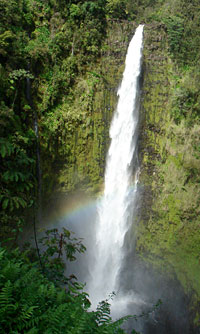Pacific Rim Neuroimaging 2009 Review
 I just recently returned from the “New Horizons in Human Brain Imaging: A Focus on the Pacific Rim” conference in Waikoloa, Hawaii. Here are some of the highlights:
I just recently returned from the “New Horizons in Human Brain Imaging: A Focus on the Pacific Rim” conference in Waikoloa, Hawaii. Here are some of the highlights:
– Kang Cheng showed some amazing results from high-resolution fMRI of visual cortex. He described some of the technical difficulties that he and his team have encountered as they engage in sub-millimeter resolution functional imaging. For instance, the distortions caused by blood flow in very small capillaries around the calcarine sulcus can seriously impact their measurements. They have trained their researchers to artfully select slices to minimize the impact.
– All I have to say about Michael Breakspear’s talk was that I understood very little of what he said and that it was one of the most awesome things I have seen in recent memory.
– The focus of Andrew Stenger’s talk was on new parallel imaging techniques being developed at the University of Hawaii. As the field strength of MRI moves higher there are a series of new problems that must be addressed. Issues of field inhomogeneity and motion artifacts that could be ignored at 1.5 or 3 T become much bigger issues at 7 T. One aspect that Stenger is working on is the signal dropout in the orbital areas of prefrontal cortex. They are working on 4-channel (and soon 8-channel) RF transmit systems that address this issue. My subjective impression of this work is that this is where we are going to reap the most rewards in terms of improving MRI in the near term. We can’t just default to higher field strength as a way to increase our signal to noise ratio – improving on RF transmission and reception are going to be key. Cool stuff.
– Alan Evans gave a talk that focused on issues of multi-center collaboration in neuroimaging. However, as a developmental researcher I was much more interested in the data he presented, which was from The MRI Study of Normal Brain Development. From their longitudinal database of hundreds of anatomical MRI scans he was able to show not just how the cortical surface changed during development but also at what rate cortex was changing across development. It was beautiful data.
– We got into a spirited debate over neuroimaging file formats on Wednesday evening. Prompted by Alan’s collaboration talk, we discussed about why there wasn’t an imaging file format that allowed for the handling of study metadata and provided a record of image processing. My argument was that there should be a means to store what each researcher did to the data in terms of the processing steps and then retain all parameters that a researcher enters for the final analysis, such as study design stimulus onsets. Having this information available would enable another researcher to fully replicate a study without further input from the original investigator. There were two responses to this:
1) Current imaging formats, like MINC, can already handle this type of information.
2) You don’t want to get involved in the holy wars of file formats.
That is fair enough, but we are going to need this form of interoperability in the future. One day in the not-too-distant future the NIH is going to require us to submit our data to a warehouse for sharing. What information do you want in your image headers when that day arrives?
Other notes:
– The Hilton Waikoloa Village Resort felt a bit like Disneyland. There was an amazing number of things to do and places to explore, but felt rather engineered at the end of the day. It was good to get out and explore the island after a while.
– Was less than impressed with Kona International Airport. Get the USDA and TSA inspection stations re-engineered people.
– On Tuesday night we ascended Mauna Kea to go stargazing. It was probably the most amazing view of the sky I have ever seen. Guides pointed out constellations using laser pointers and telescopes were available to look at stars and planets. I got to see the rings of Saturn, which was pretty damn cool.
– Volcano National Park was also a highlight. The scale of the place just boggles your mind – there are lava flows from recent eruptions everywhere. Seeing the seismometers tremble as the volcano churned underground was a treat. When you are there you really have the feeling that the ground underneath your feet is truly alive.

Leave a Reply
You must be logged in to post a comment.